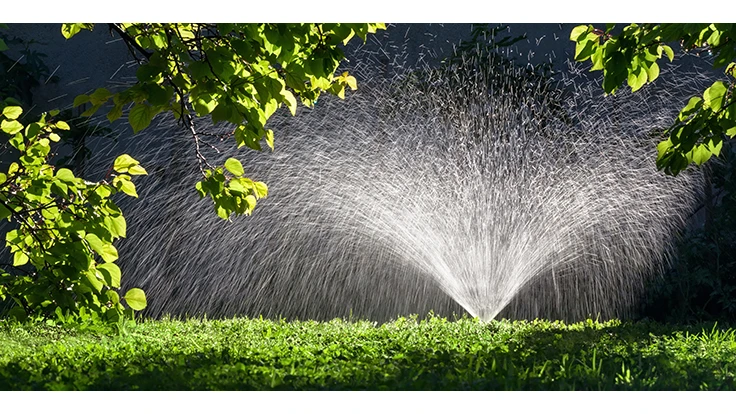
Our landscape business is conducted in the high desert regions of southern Idaho, where a good water year means we get 8 or 9 inches of precipitation for the entire year. As you can easily imagine, irrigation water is critical to keep things green in our neck of the desert.
With the advances in underground irrigation components and control timers, one stumbling block often arose for us – overwatering.
Often these sites would exhibit the telltale signs: squishy turf, mushrooms beginning to rear their heads among the new sod, trees showing signs of wilt that to the uneducated homeowner meant the place needed more, not less water.
Despite carefully worded and printed instructions given to the homeowner (twice in our company process), these symptoms often appeared. Once their new irrigation timer was set, they forgot all about it.
Get smart.
But then along came the smart controller, and, in my company’s case, the Rain Bird SMT controller. As with any new technology, the cost was higher than a traditional timed irrigation controller.
Our assumption at the time was to make it an option for our customers. So, armed with marketing materials from the manufacturer and our company, our sales staff set out to sell this as an option.
To say that our initial year of SMT sales was a disappointment is an understatement. Almost no one was willing to invest a few hundred more dollars for this technology. I could not understand why.
Like every good sales force with a great marketable idea that was failing, we went back to the war room to regroup our efforts. We thought everyone would want to upgrade to this time and water saving feature.
After further refining our SMT marketing efforts, we set out again, and failed some more. Everyone agreed with the presentation, but darn few were going to shell out the extra funds for it.
Make it standard.
Then, in 2011, it hit me. Why are we making this an option? Why not call this technological advance in irrigation controls a standard feature?
Like a light switch, everyone started buying smart controllers. Of course, our bid price increased 6-7 percent because of it, but the fact that this was now standard equipment on all our new systems helped differentiate us further in our marketplace.
We have had some older customers who weren’t very interested in the technology, but most of them are won over when we tell them they don’t have to worry about resetting their controller throughout seasonal temperature changes or rainy periods. It has helped us prove to our clients that we aren’t just in it for a quick sale or needless upgrade.
It is important to note that we had already worked hard to establish our company as a long term relationship offering and not a short term, lowest bid outfit.
We will qualify potential clients to see if we are a good fit before we agree to meet with them. This professional positioning solidifies a company’s effectiveness at upgrading its offerings without looking like a rip-off artist peddling a new-and-improved snake oil.
As an added bonus, our customers also save on water, which historically has been very cheap despite our desert climate. I saw 35 percent savings at my own house the season I installed the first controller.
We have had some other customers tell us their landscape water bill was almost half of what it was before. A lesson I have learned since is that often times the customer has to be told what they really do need, and not just make it an option. Give people what they really need, even if they don’t know it yet.
Latest from Lawn & Landscape
- Connect, Control & Conserve with Horizon Technical Services
- Use Horizon's Parts Hotline
- How I built a Top 100 company
- Horizon’s Exclusive TurfGro Fertilizer
- Grow your business with mosquito control
- LandCare adds 2 branches in SoCal, promotes Aleman to branch manager
- Spray them away
- PERC helps debut propane direct-injection fuel system at ACT Expo 2025





